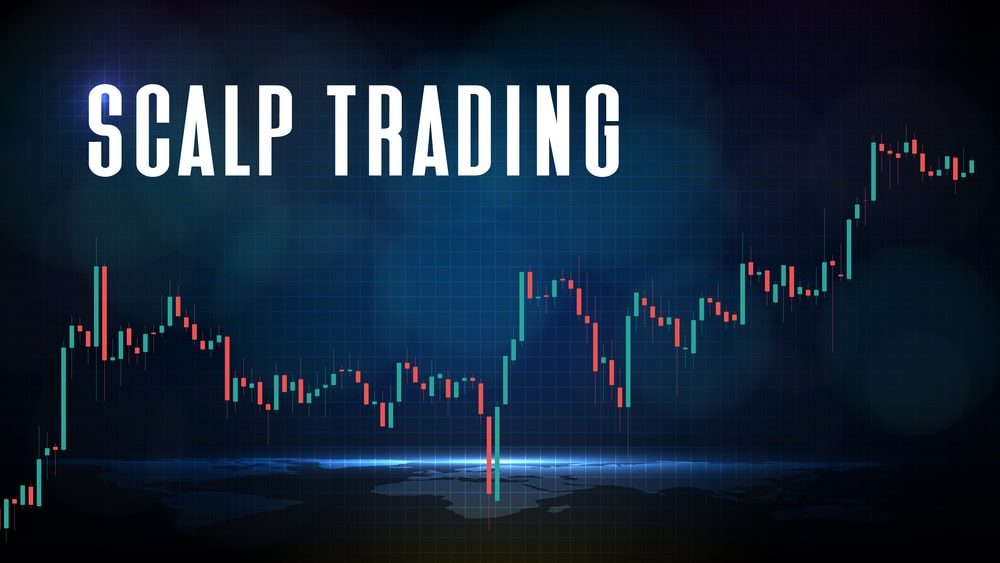What is swing trading strategy? What are the various types of swing trading?
Out of all the trading strategies, Swing trading has been one of the most prominent strategy welcomed by most of the seasoned traders. Today in this article, we will see why swing trading is the best and why you need to learn this strategy.

What is swing trading strategy?
When we talk about trading, what are the top criteria that pops right up in your mind? Most probably it might be more gains, less investment (with time or capital) and less risk factors. Well, with swing trading it covers it all. Swing trading focuses on gaining smaller profits in short term trends which lessens any chance for loss. It aims for smaller to medium term profits out of quick and frequents swing in market prices. The nature of swing trading somewhat falls between Day trading and position trading, as you can hold the trade for few days to a week, making it neither a long term or a short term trend.

Source: Mitrade
Swing trading are mostly suitable for seasoned traders as it requires in-depth knowledge of technical and fundamental analysis. By utilizing the tools, traders will analyze the market trend and as well as the entry and exit of points, which is the basics to swing trading. That’s where the name derives as Swing trading, as it takes upward and downward “swing” of the market trends. The trader will have to choose the price point where it swing upward, when this happens they will either sell the trade or stay on it longer if they expect that the price point will swing more upwards. For this, It’s very crucial to analyze the market and try to predict the most accurate outcome as possible.
Types of Swing trading in various markets.
Followings are the 4 types of Swing trading. These are frequently used by swing traders depending on the situation and the trend of the market.
1) Reversal
Reversal is when a trend goes opposite direction from the current position, it could go up from down or down to up. It refers to large scale price and trend change altogether. When the trends change, it would be hard to predict anything, but with enough time, the reversal forms quite a clear pattern and a whole new trend. The role of a reversal depends on what kind of trader you are. Because you will see many trend reversals in just a day and a whole new patter in a week. It all depends on your strategy, if you are day-trader, you can exit the market once you start seeing the reversal pattern and escape the risk. Or if you are long-term trader, then you can observe the new patterns and base your next moves by predicting the next trend.

2) Retracement
Retracement is somewhat similar to reversal, but only for a short while. In retracement, the price point while move against the trend for a very short period of time and will continue to move along with the trend. Since, the input provided by retracement is very minimal, it is not safe to depend on it solely. Many seasoned traders will advise to incorporate with other technical indicators to get accurate market data.

3) Breakouts
Breakout trading is when a price point starts to move way more that its actual regular trend i.e. above or below the resistance and support level with increase trading volume. Breakouts plays an important role in trading as it sets the future price trends. During breakout a trader could go for long term when it moves above the resistance level or go for short term when it moves below the support trend. Understanding the early pattern and trend for a breakout will help a trader big time reducing its risks. Many traders rely on technical analysis once they figure out a trend is going to breakout.

4) Breakdowns
Breakdowns are just opposite to breakouts. Breakout is when most of the price trends go above the support level, but in breakdown the price time hits below the support line. Once the price reaches the support line, traders will buy major trades, which is considered normal, but once the it crossed the support line that’s when traders need to seriously analyze the situation before they take any further action.


Pros of Swing trading
1) No full commitment required:
If you are busy person but still interested in making extra money without commitment to other income source then swing trading is a good option. Unlike traditional trading where you have spend almost very 5 minutes to check up on market trends, in swing trading you can just do your technical analysis prior to trading and find a out suitable entry price depending on your capacity.
2) Can be profitable if done correctly:
Like any other trading, swing trading can be very profitable with marginal risk if done properly with enough market analysis and risk management. Since it could be of medium term, the profit return will be take lesser time than that of traditional trading.
3) Less hassle and investment required:
Unlike long-term trading, you capital doesn’t get stuck for a very long time in any investment in swing trading. Once you feel like you have had enough or not one of your lucky days, you can just pull out your investment without any hassle.
Cons of Swing trading
1) Over-night market trend
No doubt swing trading is profitable and less risky but down turn is that it stays open overnight which increases its exposure when you are less worried about it. Today the market trend seem like it is in your favor and the next day its complete opposite. It becomes very hard for trader to monitor the market 24 hours.
2) Requires good technical knowledge
Swing trading could be good but it may not come for all the traders. One needs to have in-depth knowledge about technical analysis and market trends. Hence, it is not very suitable for amateur traders.
3) Needs right type of mindset
Swing trading fluctuates frequently and market trends are unpredictable. Sometimes it could put a immense pressure to one’s mind and result in getting off track. While indulging into swing trading, a trader needs to stick to their plan and not go emotional at all
Conclusion:
Swing trading could be a great strategy if utilized properly with good technical analysis and enough market knowledge. It can be used in various markets like Forex, commodity, stock and indices. With right mindset and solid strategy, traders can maximize their profits in a very short period of time.
The content presented above, whether from a third party or not, is considered as general advice only. This article does not contain and should not be construed as containing investment advice, investment recommendations, an offer of or solicitation for any transactions in financial instruments. Mitrade does not represent that the information provided here is accurate, current or complete. For any information related to leverage or promotions, certain details may outdated so please refer to our trading platform for the latest details. *CFD trading carries a high level of risk and is not suitable for all investors. Please read the PDS before choosing to start trading.
- Original
- Trading Analysis
Risk Warning: Trading may result in the loss of your entire capital. Trading OTC derivatives may not be suitable for everyone. Please consider our legal disclosure documents before using our services and ensure that you understand the risks involved. You do not own or have any interest in the underlying assets.



